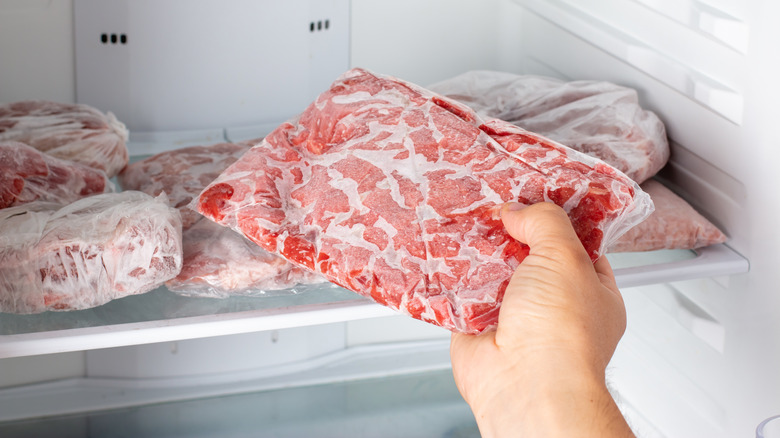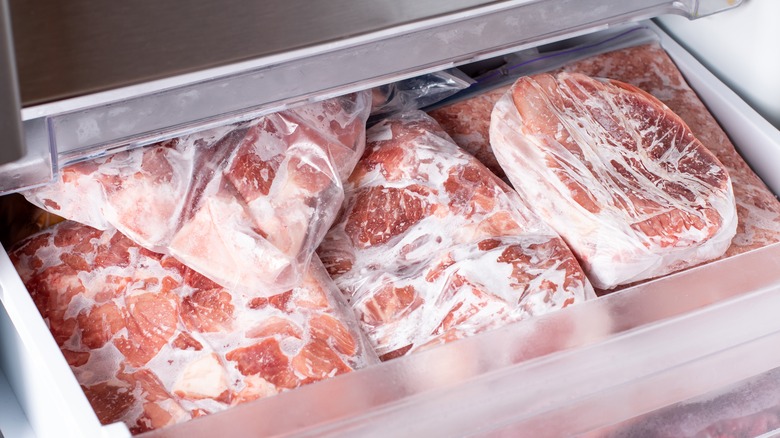The Step You Can't Skip Before Freezing Meat
Freezing meat is a great storage solution that prevents you from wasting both food and money — if you freeze it the right way, meat is safe to eat even after it expires. However, improper packaging can result in changes to the flavor and texture, making your effort all for naught. To preserve the quality of your protein, you'll want to repackage it before freezing.
The first step here is to remove the meat from its original packaging. Most meat is sold wrapped in either butcher paper or vacuum-sealed plastic. While these are acceptable seals for fresh meat, you'll want to reach for something much more secure before it heads to the freezer — especially if the original packaging is not resealable. You'll need a fresh sheet of butcher paper or plastic wrap on hand, along with plenty of heavy-duty aluminum foil.
Tightly wrap each portion of meat with the paper or plastic wrap, ensuring that there are no large pockets of air inside. Then, wrap the package in aluminum foil and freeze. Double-wrapping the meat will protect it from the harsh conditions of the freezer and help to prevent freezer burn, which can lead to unpleasant changes in taste once the meat is thawed and cooked.
Proper thawing tips to ensure your meat remains safe to eat
Ideally, you want to repackage and freeze meat and seafood products as soon as possible after purchase, in order to preserve them at peak freshness — but as long as the food finds its way to the freezer before expiring, it will be safe to eat once it is thawed in the fridge. The USDA recommends eating ground meats, poultry, and fish within one or two days after thawing, and beef, pork, lamb or veal within five days.
However, you'll want to avoid freezing meat and seafood twice. While doing this isn't unsafe, meat tends to diminish in quality each time it goes through the process of thawing and refreezing, and has a higher risk of developing freezer burn with each trip back to the freezer. It can take up to 24 hours for meat to properly defrost, so plan accordingly and try to use it up.
Removing meat from your freezer to thaw at room temperature is highly discouraged. This practice poses a serious safety risk, as bacteria grows most rapidly in temperatures between 40 degrees and 140 degrees Fahrenheit. After just two hours outside the fridge, it could cause different kinds of food poisoning that can lead to serious discomfort and even major health concerns for certain individuals.


